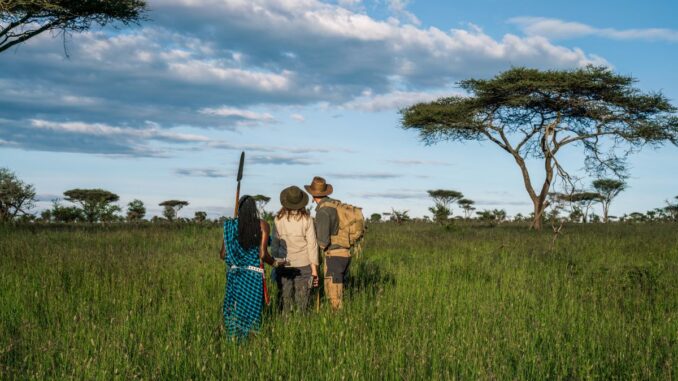
Serendipity plays a big role in a memorable walking safari. Each time we step out into the wilds, there’s a sense of trepidation, an expectation of the unknown, the anticipation of nature’s surprises. There’s fresh tracks in the sands by the river; a sighting of a bird new to the “life list”; witnessing some unusual animal behaviour; or finding a rare flower or fruit, fungus or insect. And then there’s the encounters that make the heart race, the lioness with cubs, the grumpy pair of buffalos, a dust cloud of approaching elephant.
This is why Trail guides never tire of their office, still feeling that buzz as they lace up their boots in the morning. Consumed with curiosity about the natural world, it’s their joy to share discoveries with guests. What’s more, guiding on foot provides opportunities to delve into a diversity of sciences – geology, hydrology, botany, ethology, entomology – and this means that even the most knowledgeable guides always have more to learn, keeping the job interesting.
Of course, those serendipitous discoveries work best in the right locations, especially in those pristine wilderness areas where nature is flourishing. And it does not get much better than the Serengeti. Andrea Pompele is Camp Manager and Lead Trails Guide at Lemala Nanyukie, in the heart of the Serengeti National Park. A native of Italy, he has guided in Tanzania for seven years, and speaks fluent Swahili along with a clutch of European languages. He came to trail guiding from a scientific background, a profession driven by curiosity, and is the embodiment of the art of interpretation of the natural sciences. He explains why his patch of Africa is so rewarding:
Exploring the wilderness that surrounds Lemala Nanyukie is an experience that digs deep into your heart. Walking on the rims of the hidden valleys where the eye can stretch over untouched landscapes, the rolling hills where the open woodlands are expanding their kingdom over the numerous and seasonal watercourses, interspersed by ancient rock formations emerging from the ground, majestic and imperial; admiring the vastness of the grasslands on the horizon that gives the name to this part of Tanzania: the Serengeti, literally the “Endless Plains”.
Andrea Pompele, Lemala Nanyukie Lead Trails Guide
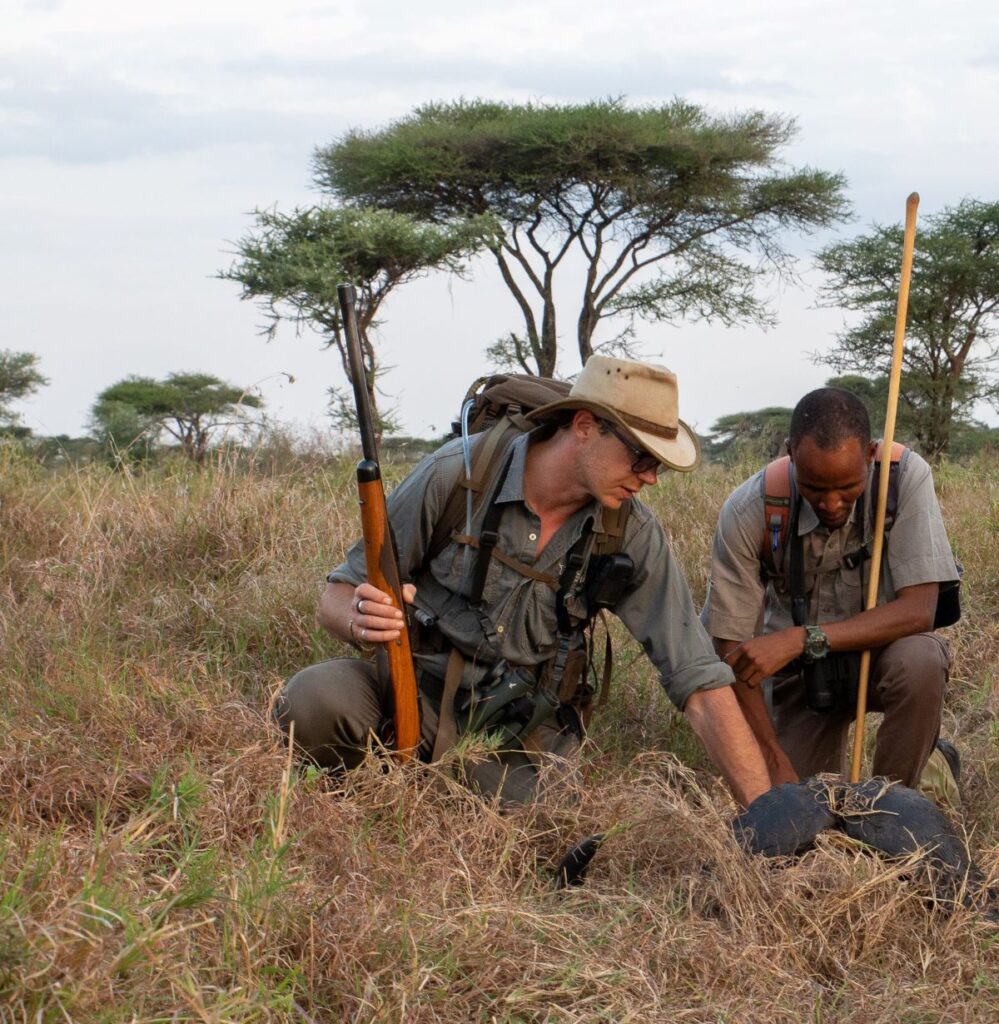
Andrea has an endless supply of bush anecdotes, stories that exemplify the daily discoveries that keep him rooted in African wilderness. Here, in his own words, are two short trail reports that exemplify the variety of experiences.
The Hidden Valleys Trail
It’s still dark. The air is cold but still, no breeze. We drive for about 20 minutes to the starting point and after the briefing we start along the rim of the Hidden Valley. From there we can see the sunrise and Ngorongoro Highlands complex on one side, the Gol Mountains on the other side. In front of us the valley extends to the left where at the end of it the camp is nestled behind the kopje.
Along the way, an abandoned hyena den and many signs of buffaloes gives us the opportunity to talk about seasonal use of resources and how big game moves across the landscape. After a brief stop for a coffee we started again and I spotted something on the ground: a Puff Adder was concealing itself in tufts of grasses, its head aside a small trail of regular use of mice, a perfect spot to take advantage of their movements and strike effectively. The guests enjoyed the sighting without disturbing the reptile.
After a few hundred meters in a thicket some horns appeared, six buffaloes resting and chewing the cud in the shade, and we approached concealed by a tree. We proceeded along the rim and spotted another lonely buffalo. Change of plan: we’re now heading towards the gully where we can spot an elephant bull on the other side in the shade of a Euphorbia candelabra tree.
On the same side of the hill, a blond figure walks by: a lioness followed by three cubs walks in the same direction we were heading to find concealment and perhaps a drink in one of the numerous pools still holding water in the gully. The dense forest and the thickets along it are a perfect place to hide the lion cubs, and we don’t approach; we opt for safety and make an ethical decision not to disturb and wildlife and influence their behaviour and enjoy the sighting from a bit of distance before she disappears.
Proceeding towards the open woodland we met another elephant bull ahead of us walking towards us, and took a quick detour to make a brief loop and accelerate, allowing us to climb a kopje and enjoying the sighting of the bull feeding on acacia trees below.
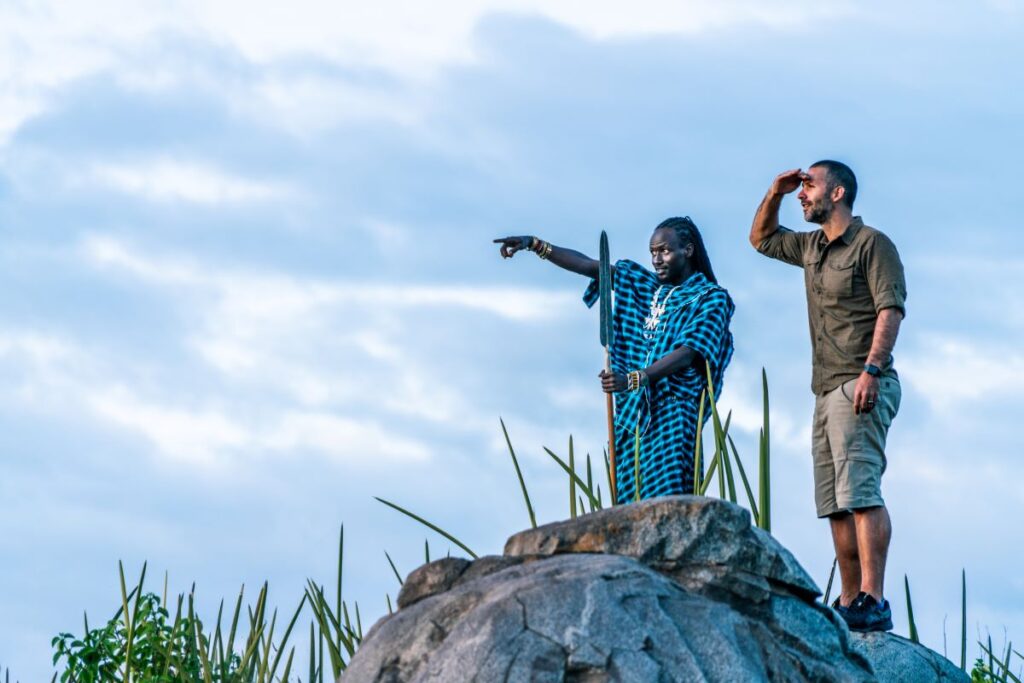
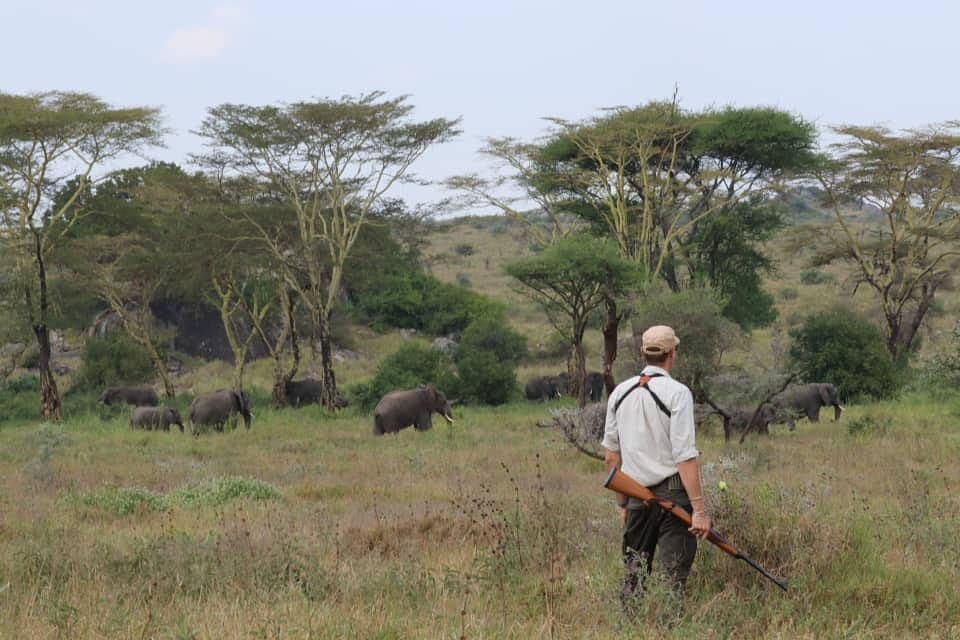
The Kopjes’ Trail
The Kopjes’ Trail is a very rewarding, short but intense, walking safari. After crossing the gully in front of camp, the walk heads towards the first kopje, where a large Rock Fig tree projects its shade on a flat rock where we can stop and observe the surroundings.
One day we were just on the rock enjoying the shade when a bull elephant decided to walk by and we could observe its way of crossing the gully and feeding on the riverine grasses along it. Proceeding towards the second kopje we spotted a herd of impalas and, in the grassland just below, a secretive figure popped up the head from time to time while walking silently and stalking the potential prey: a female leopard was trying to get a meal out of the day. We enjoyed the scene of the hunt, unfortunately unsuccessful.
We proceeded towards the view point on the top of the 4th kopje: a scene was unfolding in front of us, a band of 86 elephants was gathering on the hill in front and from the flat rock we could enjoy the view of them interacting one and each other with different families, males and calves running around while females and the matriarchs were feeding on grasses and moving slowly but steadily towards the river.
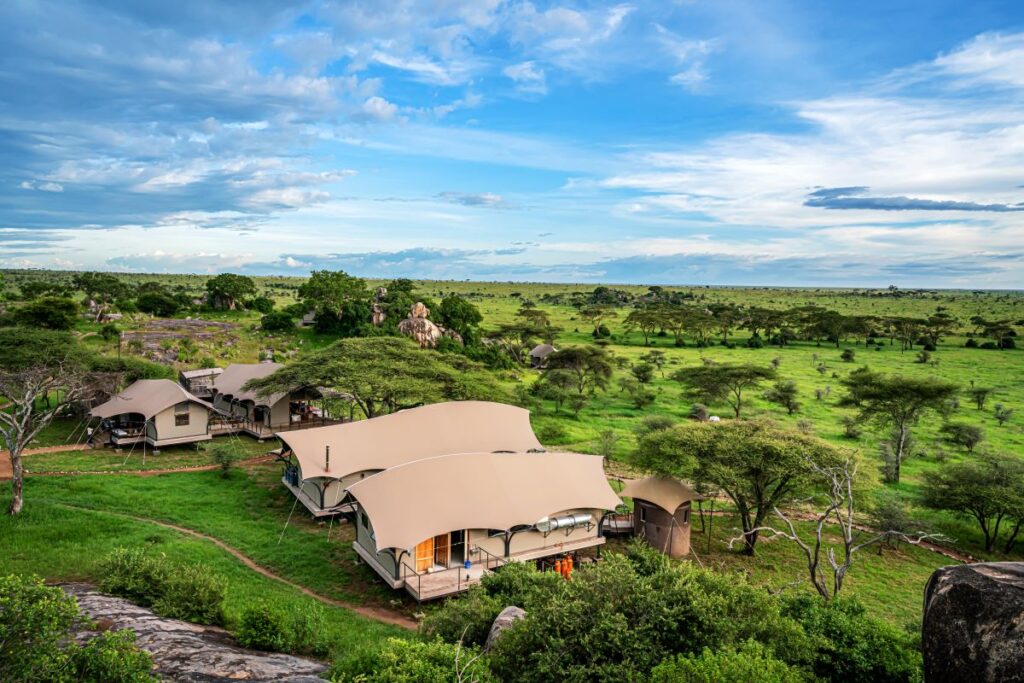
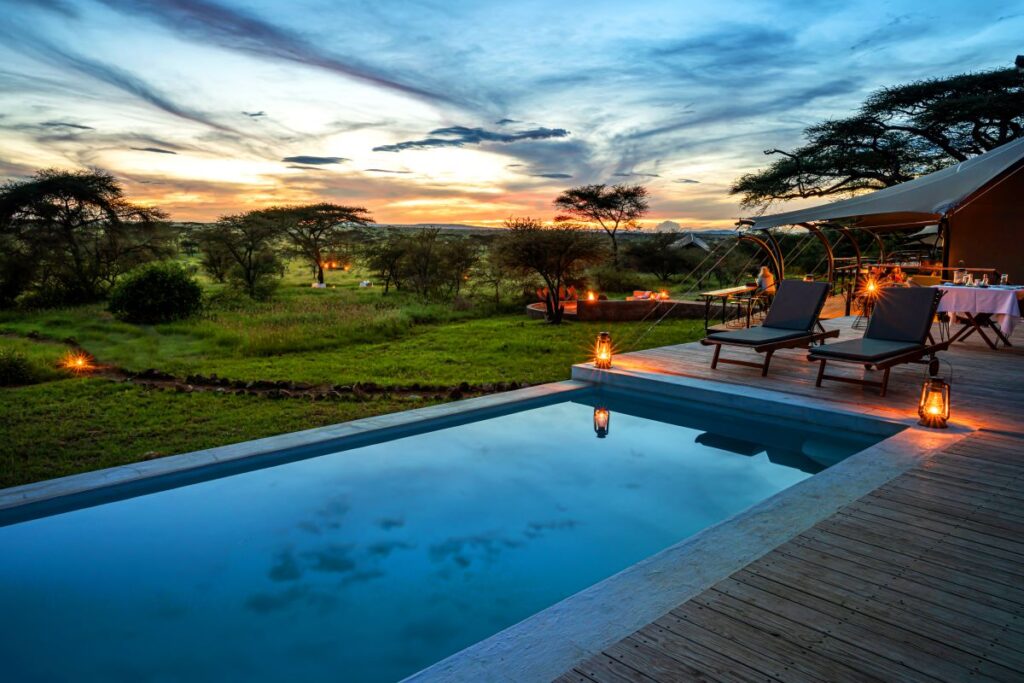
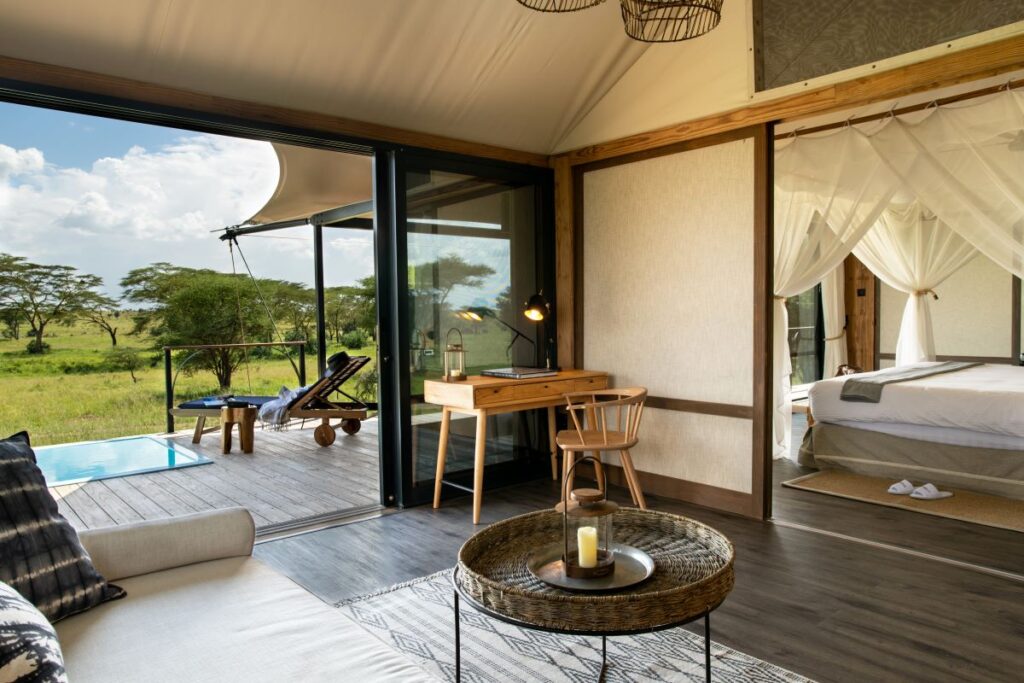
Andrea Pompele and his team offer guided walks from Nanyukie Lodge year round. The maximum group size is 6 and minimum age is 15.
For more information and booking: lemalacamps.com / res@lemalacamps.com / +255 (0)682 933933

Leave a Reply